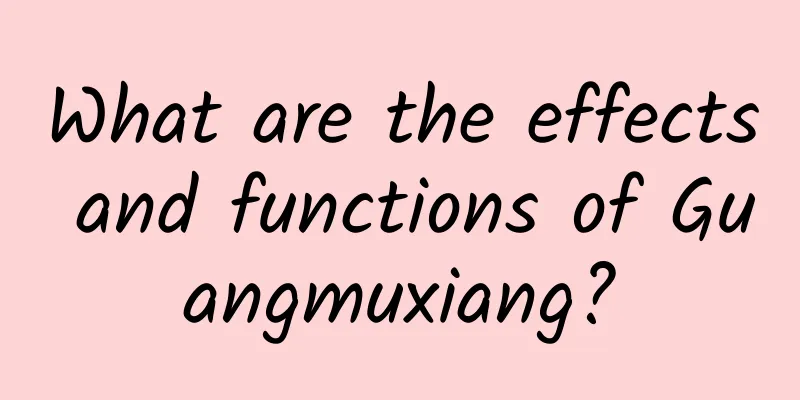Causes of low blood pressure

|
In fact, many people have low blood pressure. Although low blood pressure is not a serious disease, severe low blood pressure can cause certain harm to the human body. Some friends just feel dizzy, very tired, and unable to concentrate when they have low blood pressure, but they will be fine after a short rest. However, severe low blood pressure can also cause people to faint, go into shock, etc. If you get injured when you faint, the consequences will be more serious, so everyone must pay attention to it. Patients with low blood pressure are relatively more oral in diet, and can eat foods that patients with high blood pressure cannot eat, such as chocolate, sweets, salty foods, etc. Therefore, eating foods containing caffeine when blood pressure is low will rapidly increase blood pressure, and it is also a relatively effective way to treat low blood pressure. In daily life, patients with low blood pressure should also eat more nutritious foods. There are two main types of hypotension: essential hypotension of unknown cause (suspected to be genetic) and secondary hypotension caused by disease. Medical research shows that 3 to 7 percent of hypotensive patients suffer from intrinsic hypotension, in which the heart contractility and vascular resistance of these patients are normal; while secondary hypotension has obvious disease causes. What is low blood pressure? 1When blood pressure drops below normal and remains at a certain level, it is considered hypotension. Blood pressure may vary depending on gender, age, and body shape, but for an adult, if the systolic pressure is measured multiple times and the values remain below 90 to 100 mm/Hg, and the diastolic pressure is below 50 to 60 mm/Hg, further physical examinations should be conducted to identify the cause and provide treatment. END Causes of Low Blood Pressure 1. Heart disease Suffering from heart failure, myocardial infarction, and aortic valvular stenosis will affect the heart's function of pumping blood, reducing the amount of blood delivered by the heart, leading to circulatory disorders and causing hypotension. 2. Peripheral vasodilation When bacteria or toxins invade the peripheral blood vessels, the blood vessels lose their contraction function, leading to vasodilation and a drop in blood pressure, resulting in circulatory hypotension. 3. Temporary heavy blood loss Due to heavy bleeding from surgery or trauma, the amount of blood circulating in the body decreases suddenly, causing temporary hypotension. 4. Hypothyroidism When the thyroid function is weakened, symptoms such as loss of strength, physical and mental fatigue, chills, dry skin, etc. may occur, causing endocrine-induced hypotension. 5. Addison's disease Suffering from this disease will affect the secretion of adrenocortical hormone, causing the patient to experience symptoms such as darkening of the skin, nausea, vomiting and low blood pressure. Symptoms of low blood pressure 1 Some patients with low blood pressure have no symptoms at all, while others may experience tinnitus, headache, dizziness, blurred vision, shoulder pain, cold limbs, fatigue, decreased thinking ability, inattention, or chest pressure or burning sensation, or abdominal rumbling, constipation, diarrhea, intestinal gas, abdominal distension, or impotence in men and amenorrhea in women. If the above symptoms occur, you should go to the hospital or health check-up institution as soon as possible to undergo examinations of the heart, blood vessels, gastrointestinal tract, etc., in order to find out the true cause of the disease and seek early treatment. 2 Patients with low blood pressure often feel dizzy and weak in the limbs, feel very tired all day, have memory loss, stars in the eyes, headaches, chest tightness and palpitations. Middle-aged and elderly people may even suffer from ischemic stroke or myocardial infarction. Some patients will experience black vision, pale face, cold sweat and even fainting when they squat down and stand up again. This is called orthostatic hypotension, which is mainly caused by a rapid drop in blood pressure due to sudden standing. This situation often occurs in long-term weak patients or the elderly, and may also occur in some patients taking western medicines such as antihypertensives or diuretics. If it is due to side effects caused by certain drugs, the drug should be stopped, or the original prescribing physician should be discussed with how to avoid the recurrence of hypotension. Health regimen for low blood pressure 1 If you feel poorly energetic after getting up, have difficulty concentrating in the morning, and are easily tired, dizzy, have tinnitus, and loss of appetite, it may be due to low blood pressure, but low blood pressure does not necessarily mean you are sick. Doctors suggest that patients with low blood pressure do not need treatment if they do not have any special symptoms. It is more effective to strengthen their health care in daily life, diet and exercise than to take blood pressure-raising drugs. Lifestyle regimen for low blood pressure Measure your blood pressure frequently and pay attention to changes. 2 Get enough rest. Fatigue and lack of sleep will lower blood pressure, so you should maintain a regular life and avoid overwork and staying up late. In addition, the pillow should not be too low when sleeping. Take a hot bath. A hot bath can enhance blood circulation and improve symptoms of low blood pressure. The best water temperature is around 43 degrees C. Bathing time should not be too long. After bathing for about three minutes, you should rest for a while before bathing again. The effect will be better if you can sit and rest for a while after taking a bath. Avoid standing for long periods of time or changing your posture suddenly. When picking up things from the ground, do not lower your head directly, but squat first. When getting up, do not stand up suddenly, but make sure your body is balanced first, and then get up slowly. Pay attention to the environment and clothing. Avoid being in a stuffy environment to avoid vasodilation and lower blood pressure. Do not tie your tie too tightly, and avoid wearing clothes with collars that are too high or too tight, otherwise it will compress the carotid sinus, causing a sudden drop in blood pressure and fainting. 3. Improve nutrition. For people who are prone to low blood pressure, malnutrition will make their blood pressure even lower; if nutrition is improved, blood pressure can be close to normal values, and the accompanying discomfort symptoms can also be alleviated or disappear. Traditional Chinese health medicine recommends eating more nourishing foods such as ginger, longan, red dates, walnuts, ginseng, schisandra, yam, lily, honey, etc., which can help improve low blood pressure. Eat less blood pressure-lowering foods and do not often eat blood pressure-lowering and diuretic foods such as celery, winter melon, mung beans, hawthorn, bitter melon, onion, radish, kelp, etc. Adding a little salt to increase the salt content in the body can raise blood pressure. Patients with low blood pressure can improve the symptoms of low blood pressure by consuming about 12 grams of salt every day. 4 Exercise regularly. Exercise can regulate the nervous system, enhance cardiovascular function, and thus improve the symptoms of hypotension. Choose exercises carefully. People with orthostatic hypotension should avoid standing for long periods of time or doing exercises that change body position. People who suffer from hypotension due to certain diseases should have a health check before exercising. It is better to exercise under the guidance of a doctor and sports health therapist, which is safer. Everyone basically understands the causes of low blood pressure, and you can also try the maintenance methods introduced. If you often have low blood pressure, it is recommended to go to the hospital for treatment. Pay attention to the nutrition of your diet in your daily life, and then combine it with proper exercise and there will be no big problem. |
<<: What medicine should I take for chest tightness and shortness of breath?
>>: What should you pay attention to when you have high blood lipids?
Recommend
What are the treatments for gallstones?
I believe that many people must have multiple gal...
What are the symptoms of pelvic effusion? These four points are the most obvious
Pelvic effusion is a disease that exists in many ...
Scraping beauty, teach you the correct scraping method for the back and face
At present, Chinese medicine beauty methods are a...
What causes chest tightness after exercise? How to solve it
In life, some people often experience chest tight...
What to do if you can't close your mouth? The correct treatment method is very important
The reason why you can't close your mouth is ...
Smoking and coughing up black phlegm is a good thing
Smoking has a great impact on health, and the lun...
What to eat to relieve stomach fire fastest
Symptoms of stomach fire Gastrointestinal symptom...
Seborrheic dermatitis symptoms
The main site of seborrheic dermatitis is the hea...
What is the cause of vomiting during menstrual cramps?
When menstrual pain and vomiting occur, you must ...
What is the effect of moxibustion on Neiguan?
Moxibustion as a method of treatment has existed ...
Can macular edema be treated with injections?
Macular edema is a retinal disease, indicating a ...
Thyroid hormone
Thyroid hormone is a hormone secreted by the thyr...
Hip Dysplasia Symptoms
Decades ago, people's living standards were g...
Can a fetus be deafened in the womb?
Generally speaking, pregnant mothers who are preg...
The dangers of retinal artery blockage
The harm caused by retinal artery blockage is rel...









